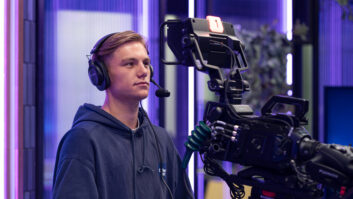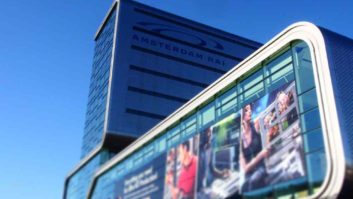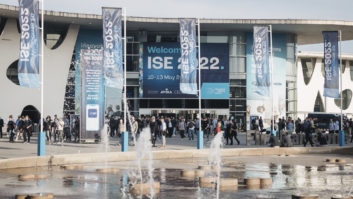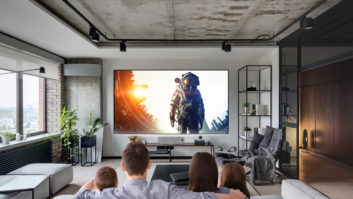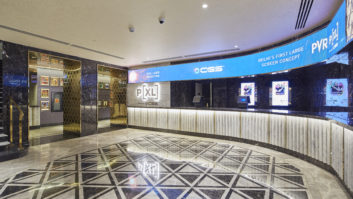A broadly based economy and a concerted emphasis on keeping inflation low are among the primary factors to have informed the Netherlands’ remarkable prosperity in the past 10 years. Annual economic growth has generally hovered around the 4% mark, while the unemployment rate has consistently been among the lowest in the European Union.
In many ways a prime mover in the EU – notwithstanding the public’s 2005 rejection of the proposed EU constitution – the Netherlands has continued to strengthen its position as one of the most mature, economically developed and forward-focused European nations.
However, in what, alas, seems destined to become a recurrent theme of IE’s country/region focus features, this cheering picture is now increasingly clouded by doubt. While inflation remains low, the ongoing global economic crisis has dealt a substantial blow to business and consumer confidence.
Consequently, you don’t have to look too far to unearth a gloomy economic prognosis, with a recent report by the Organisation for Economic Co-operation and Development (OECD) not likely to inspire the mass popping of champagne corks. According to the OECD, the Dutch economy will shrink by 0.2% in 2009 – the first time that the country has entered reverse, so to speak, since 1982.
Unfortunately, economic slowdown is not the only challenge currently confronting prime minister Jan Peter Balkenende’s centrist coalition government. In particular, it still faces the prospect of implementing welfare reforms necessitated by a rapidly ageing population.
There is, then, a general feeling of uncertainty, and it stands to reason that this will be felt in the country’s professional installation sector. Encouragingly, although there is evidence that more projects are being put on hold than at this time last year, general activity levels remain high across the country. Hotels, conference centres, leisure facilities and performance venues are among the installation applications still generating new work, while an increasing number of venues are demonstrating a willingness to engage with new-generation AV technologies such as networked audio and digital signage.
Robert de Jong, product marketing manager at Chief Manufacturing – which offers professional mounts, lifts and accessories for flat-panel TVs and projectors – says that the Netherlands’ pro-install business is “very healthy. There tends to be a high knowledge of quality products that provide a long-lasting and flexible installation. AV system integrators in the Netherlands are often brand-independent organisations that are keen to recommend the best AV solution for the job. They combine high quality with competitive prices, which is a characteristic of the Dutch market.”
“The Netherlands area is a significant and stable marketplace for us in terms of both live events and systems integration, which is where we are seeing the larger growth,” says Benjamin Saint Girons, sales director at show and media control technology provider Medialon.
Marc Kocks from professional sound equipment provider and Ampco Group company TM Audio puts the market in context. “The professional audio installation business in the Netherlands can be split between government-funded projects and privately funded projects,” he explains.
“Government-funded projects – theatres, clubs, etc – are planned long in advance and are hardly influenced by economic changes, whereas commercially funded projects are much more vulnerable to these changes. At present, though, we are seeing investments continuing to be made in both segments of the professional installation market.”
Strongest will survive
Nonetheless, Kocks does have concerns about the slowdown in the real-estate business. “The Netherlands is the home base for some of the bigger real-estate development companies, and most of them have been hurt by the crisis in the financial markets,” he says. “I think we will move into a period where the stronger companies will be able to grow or consolidate their position, while the weaker companies will suffer the most.”
Erik Seemann, general manager sales and marketing at AV solutions provider Audipack, gives the impression of a market now approaching an important crossroads. “The installation market in the Netherlands is healthy, but everyone needs to work hard to ensure that this continues,” he says.
He goes on to observe: “The economic downturn will absolutely have an effect on the professional installation sector, and we expect a ‘shake out’ of small and financially unstable companies.”
Wim Arts, marketing manager at wall and ceiling mounting systems provider Vogel’s Professional, also voices a few words of warning. “As in most of Europe – and the world – the Netherlands AV market is getting more difficult,” he says. “The economic situation is affecting the Netherlands, and AV projects are more often on hold or delayed.”
Before delving more deeply into the challenges that may or may not lie ahead, which applications and products are generating the most new business for our featured companies right now?
For Vogel’s, the most important stream of new orders is provided by smaller digital signage projects. “A lot of small installations are taking place,” says Arts. “By contrast, large digital signage projects run over long periods and there are not that many in the Netherlands. Also, most of them are still yet to enter a decision phase.”
Product-wise, it is digital signage display custom housing TVskin that is leading the company’s sales in the fixed installation market. Retail chains and casinos are among the key customer bases. “In more and more signage projects we see the end user wanting TVskins to be added to their displays in a custom colour and/or branded with their logo,” says Arts.
“‘Just a display’ is nothing special any more, but a fancy housing in a specific colour or with a logo added is eye-catching and makes digital signage more effective – even when the display is off. It is the finishing touch for a digital signage project.”
The trend towards the adoption of digital and network-based technologies is providing considerable opportunities for Medialon. “These elements are more and more a part of AV systems,” says Saint Girons. “Thanks to the native compatibility of Medialon software-based Show and Media controllers with such requirements, this development is working in favour of our expansion.”
Audipack, meanwhile, has recently been delivering solutions via its value-added partners to university hospitals, conference/exhibition facilities (including ISE host venue the Amsterdam RAI), broadcasting companies and private residences. In terms of the most popular solutions, Seemann says that the company has been receiving a high number of orders for lifting systems, flightcases and silent interpreter booths.
Products performing well for Chief Manufacturing in the Netherlands include the RPA Elite Universal Inverted Projector Mount with Keyed Locking. Looking forward, the company is planning to debut more than 20 new mounting solutions at the ISE exhibition in February.
Meanwhile, it is theatres and clubs that represent the core installation sectors for TM Audio and Ampco Group sister company Lightco. “Most of these projects are government-funded and are therefore not too susceptible to economic fluctuations,” explains Kocks.
TM Audio’s extensive interests – it is also a leading player in the Netherlands’ MI, rental and corporate markets – puts the company on a strong footing. “Because of this strategy, TM Audio is built on a very wide and solid base, with strong multiple foundations.”
As might be expected, different companies hold contrasting views on the challenges now facing the installation business.
For Arts, the tendency of some end users and installers to put price above quality remains a source of concern. “There is a traditional end-user perception that low cost is more important than added value,” he says. “It is still the case that many installers go for a low price and don’t look at quality and easy-to-mount products. A Vogel’s product may be higher-priced than the low-cost mounts, but it offers better quality, looks and safety, along with a quicker installation time.”
Difficult times ahead?
The need for companies to emphasise their strengths and remain open to the exploration of fresh market segments is a common theme.
“Due to the economic downturn, we expect that small companies will disappear from the market or start working together and ‘bundle’ their strengths. A focus on quality and margin is essential to survive,” believes Seemann.
“All links in the Netherlands’ audiovisual distribution channel are becoming more conscious of costs,” says de Jong, “and are therefore spending more time on making sure that the product and supplier mix that will be used in future projects meets the demands of their customers.”
“I think that any company should be able to arm itself against [the economic circumstances],” says Kocks. “The challenge is to diversify into new market segments. The quality demanded by companies in the private sector is rising and, increasingly, they expect solutions previously seen in the entertainment technology sector, such as LED video and lighting applications, audio systems design and lighting, and full video and audio system integration.”
Forging new partnerships – and strengthening existing ones – may also help suppliers and installers to weather the storm, should it arrive.
Co-operation, therefore, is key. De Jong proffers a useful example: “We are helping a professional Dutch AV partner to understand and communicate the benefits of using AV support systems to ensure that they make the most of the opportunity to make flat-panel mounts an integral part of the sale, rather than an after-thought.”
A willingness to explore other emerging markets may also be beneficial for companies that are based in the Netherlands or for whom the country represents an important market.
“If the global crisis is still to impact in a way that has not yet been revealed, our international exposure is balanced by the fact that we have a presence in booming countries such as the UAE and China, where more and more European (including Dutch) companies are operating,” says Saint Girons. “Having said that, we will see what the situation is at the end of 2009.”
Still, with standards and expectations continuing to rise, there is every reason to suspect that – whatever the challenges in the mid to long term – the Netherlands will continue to play host to a vibrant and diverse professional installation sector. The country has long been a pivotal player in the development of the modern installation business, and it will surely remain so.
